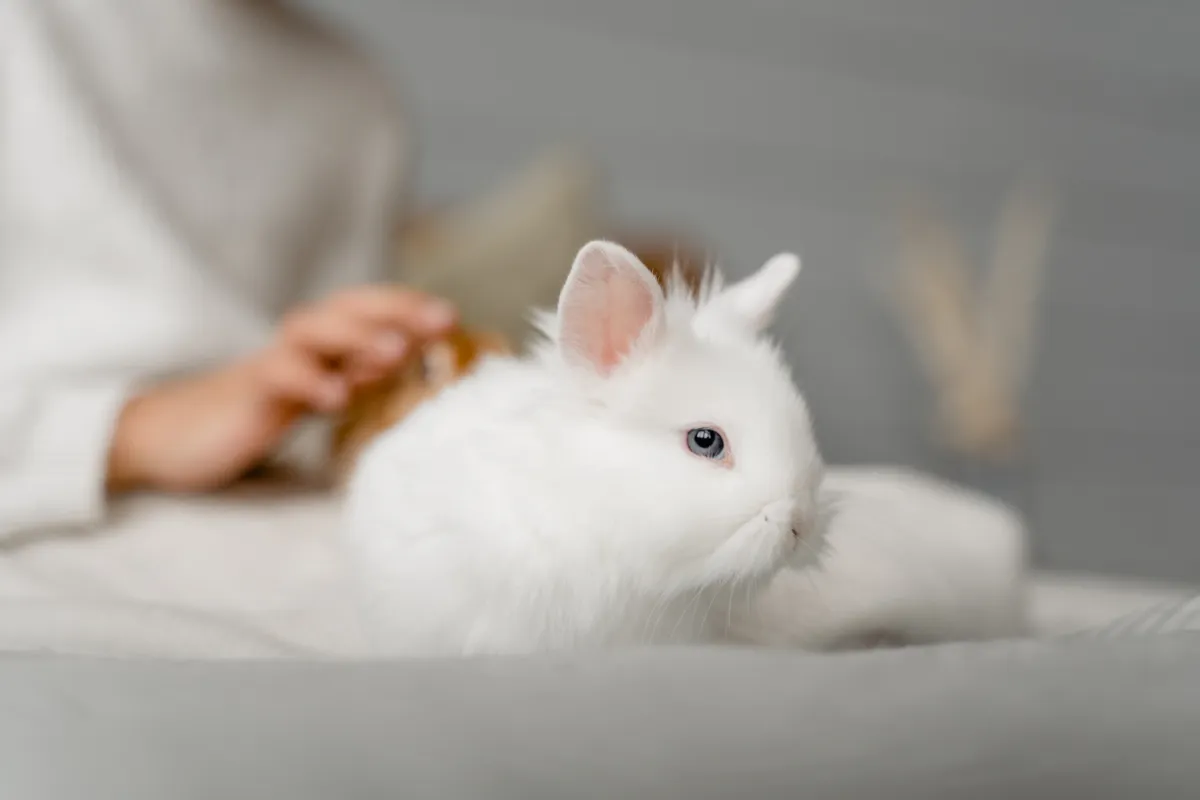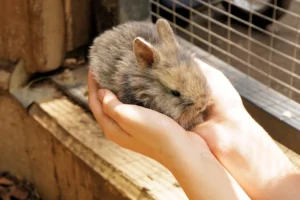Have you ever wondered what baby rabbits look like? Well, get ready to be amazed!
Baby rabbits, or kits, are small and adorable bundles of fur. Their fur comes in a variety of colors and textures, from soft and fluffy to sleek and shiny.
Their cute little faces are characterized by round eyes and twitching noses.
As you delve into this article, we will explore the fascinating differences between baby rabbits and their adult counterparts, as well as their physical development.
So, let’s dive in and discover the world of baby rabbits together!
In This Article
Key Takeaways
- Baby rabbits are significantly smaller than adult rabbits and have a more rounded and chubby appearance.
- Baby rabbits are born blind and hairless and require special care, including a milk-rich diet.
- Baby rabbits have adorable button noses, round and expressive eyes, and relatively large ears compared to their body size.
- Baby rabbits rely on their mother’s milk for nourishment, but as they grow, they transition from a milk-only diet to solid foods.
Size of Baby Rabbits
Do you know how the size of baby rabbits compares to adult rabbits?
Baby rabbits, also known as kits, are born helpless and completely dependent on their mother. At birth, they weigh only about 1 to 2 ounces and measure around 3 to 4 inches in length.
Compared to adult rabbits, which can weigh between 2 to 20 pounds and measure up to 20 inches in length, baby rabbits are significantly smaller.
As they grow, kits rely on their mother’s milk for nourishment, as their digestive system isn’t yet fully developed. They’ve a high metabolism and need to feed frequently, typically every few hours.
Baby rabbits also exhibit nesting behavior, where they’re born in underground burrows or nests made by their mother. These nests provide warmth, protection, and camouflage for the vulnerable kits.
Fur Color and Texture
You can feel the softness of a baby rabbit’s fur as you stroke it gently. The fur color of a baby rabbit is influenced by its genetics, which can vary from one rabbit to another. Here are four key factors to consider when it comes to fur color genetics and caring for baby rabbits:
- Genetic inheritance: The fur color of baby rabbits is determined by the genes they inherit from their parents. Different combinations of genes can result in a wide range of fur colors, including white, black, brown, gray, and even patterns like spots or stripes.
- Melanin production: The production of melanin, a pigment responsible for fur color, can vary among baby rabbits. Some rabbits produce more melanin, resulting in darker fur, while others produce less, leading to lighter fur shades.
- Environmental factors: While genetics play a significant role in fur color, environmental factors such as sunlight exposure can also influence the intensity and brightness of a baby rabbit’s fur color.
- Care and grooming: To maintain the health and appearance of a baby rabbit’s fur, proper care and grooming are essential. This includes regular brushing to remove loose fur and prevent matting, as well as providing a balanced diet rich in nutrients that promote healthy fur growth.
Understanding fur color genetics and providing proper care will help ensure that baby rabbits have vibrant and beautiful fur throughout their lives.
Facial Features of Baby Rabbits
You will notice that baby rabbits have adorable button noses and round, expressive eyes. When it comes to eye color in baby rabbits, it varies depending on the breed and genetics. The most common eye colors in baby rabbits include brown, blue, and hazel. As they grow older, their eye color may change.
Baby rabbits also have relatively large ears compared to their body size. This is because their ears play a crucial role in their survival. The large ears help them detect potential predators and any other sounds in their environment. The size of the ears may differ between breeds, but generally, baby rabbits have ears that are proportionally larger than those of adult rabbits.
These unique facial features make baby rabbits even more adorable and endearing to serve and care for.
Differences Between Baby Rabbits and Adult Rabbits
Take note that there are several notable differences between baby rabbits and adult rabbits. Understanding these differences is crucial for providing appropriate care and ensuring the optimal growth rate of these adorable creatures. Here are four key distinctions to consider:
- Size: Baby rabbits, also known as kits, are significantly smaller than adult rabbits. They weigh around 50-100 grams at birth and gradually reach their adult weight of 2-4 kilograms within a few months.
- Appearance: Baby rabbits have a more rounded and chubby appearance compared to their adult counterparts. Their fur is usually softer and fluffier, with a less defined color pattern.
- Development: Baby rabbits are born blind, hairless, and completely dependent on their mother for nourishment. As they grow, their eyes open, fur grows in, and they start exploring their surroundings.
- Care requirements: Baby rabbits require special care, including a diet rich in milk and a warm and clean environment. They need frequent feeding and monitoring to ensure their proper growth and development.
Understanding these differences will help you provide the appropriate care and support for baby rabbits, ensuring their healthy growth and well-being.
Physical Development of Baby Rabbits
Watching the physical development of baby rabbits can be fascinating, as they grow from blind and hairless creatures to curious and active explorers.
In the first few days of their lives, baby rabbits rely solely on their mother’s milk for nutrition. They’re born blind, hairless, and completely helpless.
Around 10 days old, their eyes begin to open, revealing their beautiful, round, and dark eyes. At this stage, they start to develop a fine layer of fur, making them look more like miniature rabbits.
By two weeks old, they’re able to hop around and explore their surroundings. This is an exciting milestone as they become more independent and start to nibble on solid food, transitioning from a milk-only diet to a combination of milk and solid foods.
As they continue to grow, their diet and nutrition become increasingly important for their overall health and development.
Frequently Asked Questions
How Long Do Baby Rabbits Stay With Their Mothers?
Baby rabbits usually stay with their mothers for about 3-4 weeks before they start the weaning process. During this time, the mother provides important maternal care, such as nursing and grooming, to ensure the baby rabbits grow and develop properly.
Can Baby Rabbits Eat Solid Food?
Baby rabbits’ digestive system develops rapidly, allowing them to eat solid food by the age of three weeks. Their nutritional requirements include a diet rich in hay, fresh vegetables, and pellets specifically formulated for growing rabbits.
Do Baby Rabbits Have Any Predators?
Baby rabbits do have natural defenses against predators, such as their ability to camouflage and stay still. However, they are also reliant on their mothers for protection, as they are not fully independent or capable of defending themselves.
Are Baby Rabbits Born With Their Eyes Open?
Baby rabbits are born blind and with their eyes closed. They open their eyes after about 10 days. During their development stages, their eyes gradually open, allowing them to explore their surroundings.
How Many Babies Can a Rabbit Have in One Litter?
During the rabbit breeding season, a rabbit can have multiple babies in one litter. The number varies, but it is not uncommon for a rabbit to have 4-12 babies at a time.





